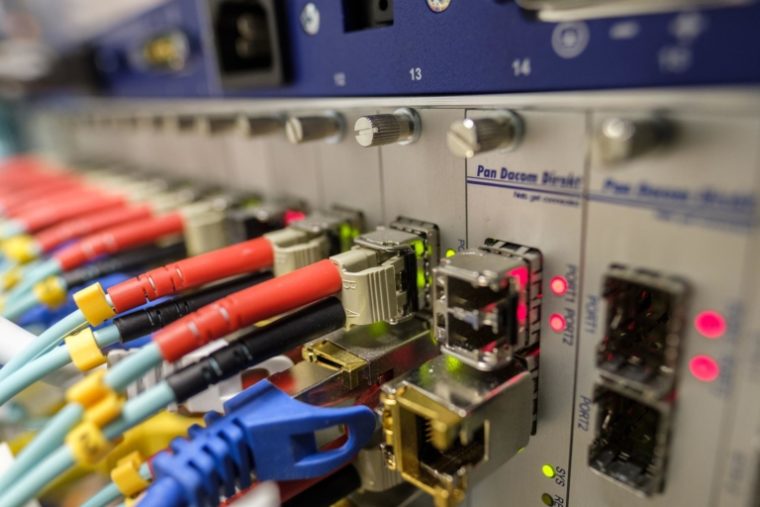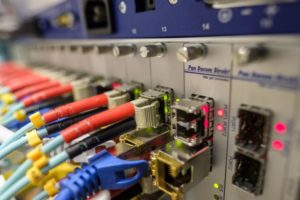
‘Bridging the Digital Divide’ initiatives are being launched throughout the country and as projects are completed, America will be forever changed. The connectivity efforts will result in thousands of new opportunities, more efficient government, better education, enhanced healthcare, and greater public safety. Ultimately, millions of Americans will benefit.
It is difficult to grasp how costly this undertaking will be, but funding is readily available from numerous programs and sources. A 2022 report, the North American Fiber Broadband Report and 5G Review and Forecast, projects that the cost of closing the U.S. digital divide will have exceeded $125 billion by 2026.
Success will depend on coordination between public and private sector partners because there will be nothing simple about completing the goal of connecting all regions of the country. It will take collaboration, patience, and an abundance of expertise. Private sector partners will be in high demand.
Some visionary leaders will launch projects designed to enhance the benefits of broadband even more. They will use what is called ‘dark fiber’ to create revenue that will flow back to the public entity. As a result, not only will the community benefit from more efficient power grids and the management of water systems, new funding also will be available to provide other citizen services.
Dark fiber is the part of a fiber optic infrastructure that is not being used. That broadband overage can be leased by others and revenue collected will flow back to public entities. A feasibility study prepared for Williamstown Massachusetts suggested that construction of a dark fiber network which would cost $7 million, will provide new revenue back to the city for decades.
City leaders in Colorado Springs, Colorado also plan to develop a dark fiber network. Leasing out extra bandwidth will provide revenue for numerous types of smart-city applications such as advanced meter infrastructure, more efficient water system management, and an electric grid infrastructure that will allow for solar, geothermal battery energy, and microgrids. Plans call for this $100 million investment to result in high-speed connectivity to local businesses, residents, and other organizations by early 2024.
City leaders in Holland, Michigan are in the early stages of a plan designed for high-speed connectivity, and planning documents outline projects costing $22.2 million. Contracting opportunities will be announced as soon as the planning is completed.
A project in Palo Alto, California will provide connectivity to underserved areas, but the effort will also focus on the risk of natural hazards. Work will include removing, diverting, and occasionally extending portions of city-owned overhead fiber lines away from high fire threat areas. Underground work will be required for some segments of existing cable lines and while cost estimates are not yet available, the city will invest an initial $11 million for foundational work that is required.
Many school district leaders are front and center in developing plans for connectivity. Community leaders and public officials in Dallas, Texas are working together to identify digital equity challenges. Dark fiber will be used to link schools, libraries, homes, and public safety units eventually to fiber backbones. Revenue captured will be used for additional educational efforts.
A project in Fremont, California to ensure broadband equity is being designed for private participation. City leaders say that new fiber infrastructure will have the capacity for private internet service providers also. The first phase of construction is scheduled to begin in 2023 and construction costs are estimated at $22 million.
In the Texas county of Fort Bend, a feasibility study outlines what community leaders are calling a transformative broadband project. The study identified connectivity needs, especially in traditionally underserved regions, and revealed that an overall poor state of connectivity still exists in spite of earlier initiatives. Officials now will respond to the findings with a $37 million initiative to construct a “middle mile” with a network of larger cables. More internet traffic will be available and as the project advances to the engineering stage, officials plan to seek a public-private partnership engagement to deliver the project.
Palo Alto officials will shore up broadband connectivity to underserved areas and also focus on the risk of natural hazards. Plans will include diverting, and occasionally extending portions of the city-owned overhead fiber lines away from high fire threat areas. Also included will be costly underground work for some segments of existing cable lines. A design-build solicitation has been suggested for the project, which is currently in its engineering phase. An initial $11 million for foundational work on the project has been allocated.
Erie County officials in New York will begin their digital divide work by launching a countywide public access network expected to cost $29 million. The network will require roughly 400 miles of cable and part of the open access network will be leased to private ISPs for revenue-capturing capabilities.
Officials in Alexandria, Virginia are in the process of developing plans for a city-owned fiber network that will be launched in 2023. Currently, the city has allocated $13 million for design and construction.
Officials in Yazoo City, Mississippi will begin equitable broadband deployment by incorporating the work into transportation corridor plans. As city leaders tap into a $12.6 million federal grant to revitalize the downtown corridor, installation of broadband infrastructure will be a priority.
These emerging opportunities offer a glimpse into connectivity efforts throughout America. The opportunities are abundant, and the resulting benefits will be exceptional.

